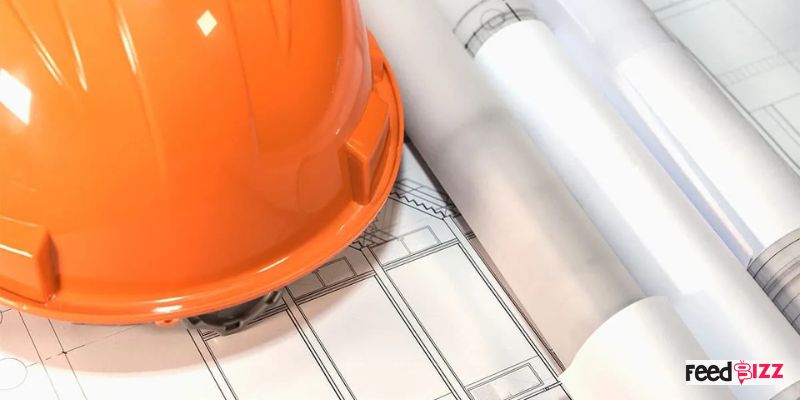A precise cost estimate is among the most important elements of any construction project. It doesn’t matter if it’s a home construction project, a commercial structure, or an infrastructure venture; the precise estimation of budgets can be the difference between the success or failure of your project. Construction estimating services give contractors, builders, and homeowners accurate estimates of costs to make sure the project stays on budget and within schedule.
In this post, we’ll look at methods, tools and the best practices firms in the construction industry employ to provide accurate estimates.
What Are Construction Estimating Services?
Estimating construction services includes calculating the entire price of a construction project, comprising materials, work, personnel, and other overhead costs. The aim is to present an accurate budget before construction starts, allowing stakeholders to stay clear of financial surprises.
Professional estimation firms for construction make use of advanced tools as well as proven methods to create accurate cost estimates. They ensure that project managers and contractors can make well-informed choices.
Key Tools Used in Construction Estimating Services
Modern estimation services for construction depend on a mix of computer software, electronic databases, and experience to give precise estimations. A few of the most widely utilized tools include:
1. Estimating Software
Software for construction estimating helps professionals simplify the process of estimation through the automation of calculations and increasing accuracy. Some of the most well-known tools are:
- PProEst is cloud-based estimation software featuring advanced reporting and cost-tracking capabilities.
- PlanSwift is a takeoff as well as estimator tool that allows users to take measurements of the digital blueprints with precision.
- Sage Estimating An effective estimating platform that works with both project and accounting systems.
- STACK is cloud-based software specifically designed for contractors who want to make quick and precise takeoffs.
The tools help reduce human error, improve productivity, and permit estimators to evaluate various scenarios for projects efficiently.
2. Cost Databases
Accurate estimates require up-to-date pricing information. A lot of estimates for construction companies depend on cost databases such as:
- RSMeans is a well-known cost database that lists prices for construction materials and labor according to region.
- National Construction Estimator Cost reference tool for the estimation of commercial, residential, industrial, and other construction.
They help estimators modify prices based on the location as well as labor costs and fluctuation in the material.
3. Digital Takeoff Tools
The tools for takeoff permit estimators to study blueprints to determine the quantity of material rapidly. Instead of measuring by hand the dimensions of paper, digital takeoff tools let estimators measure dimensions directly using electronic plans. Some of the most well-known tools used for takeoffs are:
- Bluebeam Revu A markup for PDF and takeoff tool to improve the efficiency of estimation and collaboration.
- On-screen takeoff (OST): A simple tool designed for the user that makes it easier to perform the analysis of blueprints.
Techniques Used in Construction Estimating Services
To create accurate cost estimates, construction estimating companies companies employ a variety of methods dependent on the project’s complexity as well as the data available.
1. Unit Cost Estimating
The method is based on estimating the cost by utilizing predetermined unit costs for labor and materials. Each project’s construction task has a specific cost for each unit (e.g., costs per square foot of drywall construction). Cost estimation for units is typically employed in commercial and residential projects.
2. Assembly Estimating
This method assembles the related tasks of construction into groups to make cost estimation easier. As an example, instead of using estimates for the cost of individual components of walls (studs), the estimator can make use of a per-square-foot estimate for walls that are fully constructed.
3. Parametric Estimating
Parametric estimating employs mathematical models to estimate expenses based on project elements like the size of the building as well as the number of floors and the quality of materials. This is a useful technique to budget early on when full plans aren’t available.
4. Bottom-Up Estimating
It involves estimating every element of the project individually before combining the sums to calculate the overall cost. Although it is time-consuming, bottom-up estimation yields highly accurate results.
5. Analogous Estimating
Also referred to as historic estimation, this method is based on past projects to determine the new project’s expenses. It is beneficial for skilled contractors who’ve completed similar projects previously.
Best Practices for Accurate Construction Estimating
To improve the accuracy of estimation and reduce financial risk, construction estimating company providers adhere to these top methods:
1. Gather Comprehensive Project Information
An accurate estimate begins with detailed documentation for the project, comprising architectural drawings along with engineering plans and specifications for materials. The more details you have, the better the estimation is likely to be.
2. Use Up-to-Date Cost Data
Costs for labor and materials fluctuate in response to the market as well as inflation and the location. Estimators need to refresh their cost database to keep up with current trends in pricing.
3. Consider Project-Specific Factors
Each project is unique and has its problems, like location conditions, the impact of weather, and the availability of local labor. Incorporating these factors will help to create realistic estimates.
4. Include Contingency Allowances
The unexpected costs and changes that are not anticipated can be expected in construction. A contingency plan (typically 5-10 percent of the estimate) can provide a financial cushion to cover unexpected costs.
5. Review Estimates for Multi-Stakeholders
The collaboration between contractors, estimators, and architects ensures the accuracy of estimates and takess into account every aspect of the project. Reviewers help spot mistakes and increase the accuracy of estimates.
6. Use Historical Data for Benchmarking
The comparison of estimates against previous projects similar in scope will help confirm cost assumptions and improve the accuracy of pricing.
7. Leverage Technology for Efficiency
Cloud-based collaboration tools, as well as digital takeoff programs significantly enhance estimation accuracy and minimize mistakes made by hand.
The Role of Construction Estimating Companies
A lot of contractors and owners depend on professional estimates for construction for the complicated job in the cost estimate. They specialize in:
- Providing independent, unbiased cost estimates
- Specialized expertise in commercial, residential, as well as industrial projects
- Utilizing advanced software as well as cost databases for exact computations
- Contractors can win bids by providing precise and competitive pricing
When outsourcing their work to a skilled construction estimation service, businesses can be focused on project implementation while also ensuring that financial controls are in place.
Conclusion
An accurate cost estimate is the basis of the success of a construction. Utilizing modern technology, utilizing historical data, or using best practices estimates for construction are essential in aiding contractors, builders, and homeowners to make informed budgetary decisions.
Utilizing the appropriate equipment, utilizing proven methods, and working in conjunction with seasoned estimation firms for construction project stakeholders can limit risks, reduce budgets, and ensure the smooth execution of projects from the beginning through the finish.









